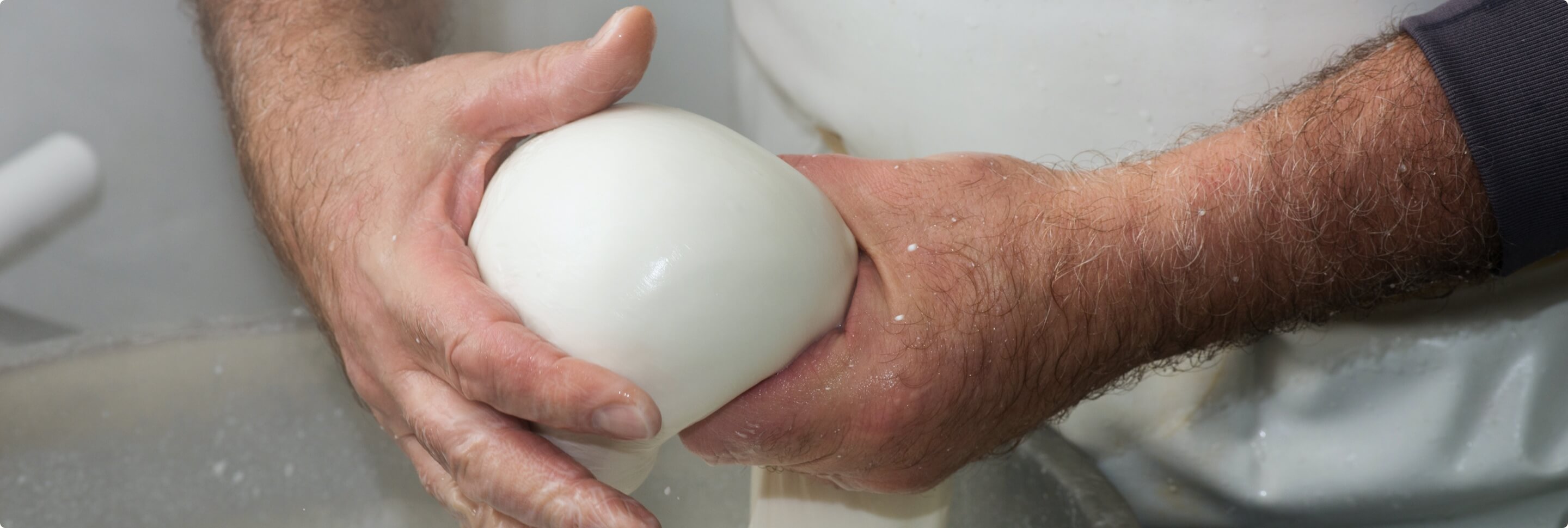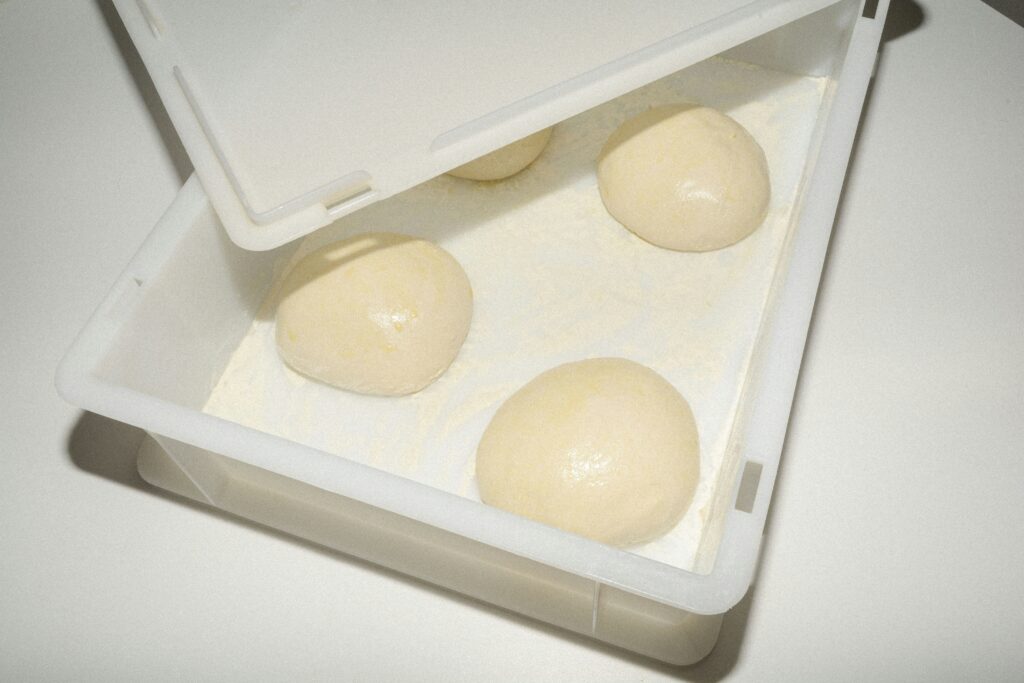
Some tips to make pizza with Mozzarella di Bufala Campana, exalting its flavor.
In Italy, Bufala is a term that can refer to different things. For the writer, bufala only refers to one thing, namely the animal (Italian buffalo). Among the tamest animals in the world, it produces the milk used for one of the greatest expressions of Italian gastronomic culture, Mozzarella di Bufala Campana PDO. The word “bufala” is reductive and it does not express very well the complex history and the subsequent spreading of this spun paste cheese that today is the third PDO product in the world in the dairy sector. We can define it as a great achievement if we think this cheese is a subcategory of provola cheese and that, unlike the other two, which are aged and well preserved, this one is consumed very fresh.
The term is pretty ancient and it seems to have been cited for the first time in a cookbook, published in 1570 by Bartolomeo Scappi, cook of the papal court. It comes from the term “mozza”, which the Florentine Giovanni Paolo Rucellai had mentioned even earlier, in 1481, probably referring to the action of cutting the cheese with hands. Always associated with the word “provatura”, which refers instead to its cousin “provola“, it was certainly a by-product that was probably destined to a restricted circle of refined tasters, above all because of the difficulty of preservation and commercialization due to its extreme freshness. Even though they vary according to the times and to the ways of speaking, it is evident that all the denominations, although different, have always referred to what today is called “mozzarella”.

In the market of Capua, already in 1500, mozzarella and provola cheese were sold, however it was certainly from 1720 on, when mozzarella was introduced in the Neapolitan market as well, that the product spread considerably. In addition to mozzarella, especially in the area of the Royal Palace of Carditello (CE), there was also the breeding and the consumption of buffalo meat, thanks to the improvement of the breed and to the continuous conversion of swamps in perfect lands for breeding. After the unification of Italy, with the reclamation of the whole production area in the province of Caserta and the subsequent conversion into agricultural land, the number of bred livestock decreased but the first railways allowed the product to cross the borders of Campania Felix (ancient Latin name of Campania region).
Mozzarella obtained PDO certification (Protected designation of origin) on June 12, 1996 by means of Regulation (EC) No 1107/1996. The PDO label defines the production area as well as the conditions for obtaining the certification. The label therefore ensures that the production and processing of raw materials take place entirely in the production area and exclusively using Italian buffalo milk. In 1993 the Consortium for the Protection of Mozzarella di Bufala Campana was established in order to promote the gastronomic culture of this cheese, to safeguard its typicality, its peculiar characteristics and the use of the denomination, as well as to support the constant improvement of production techniques.
The milk produced in the farms is transported in a very short time to the production plants where it is subjected to all hygienic-sanitary controls and to the additional ones indicated by the Production Regulations before starting the processing. This milk has a different composition from that of other animal species used for cheese production. Compared to cow and sheep milk, for example, it is richer in proteins, fats and calcium. These chemical characteristics make it possible to obtain cheese-making yields twice as high as those generally obtained with cow milk, in particular 1q of buffalo milk/24 kg of mozzarella vs. 1q of cow milk/15 kg of fiordilatte cheese. But we certainly don’t choose it for its yields! Not least because the cost of the two raw materials is very different. The main difference regards the composition of milk: cow milk is composed for about 87% by water, whereas buffalo milk for about 81%. This makes the milk different even just by sight (buffalo milk is opaque). Finally, mainly because of the higher presence of fats in it, buffalo milk is much tastier, as well as being more suitable for cheese making.
It is difficult to establish how mozzarella di bufala came onto pizza. There have been many hypotheses. Among conservatives and purists of fiordilatte (Italian mozzarella), its use on pizza as a topping is very controversial and debated.
Even for those who want to make pizza at home, the Consortium recommends to use a Mozzarella di Bufala Campana PDO that is a little drier, extracting it from its preserving liquid at least a couple of hours before use. In order to obtain this result, the product can also be put in the refrigerator without its preserving liquid the day before. The best thing to do is to cut mozzarella in half and then into slices no more than 5 mm thick (avoid julienne cut). In this way the filling step will be easier, the distribution of the product on the whole surface will be more homogeneous and all the organoleptic characteristics will be preserved. After cutting, place the slices of mozzarella in holed containers in order to eliminate any excess milk this cheese is rich in (it should not be squeezed in any way). Following this procedure, at the high temperatures of both wood-fired oven and electric home oven, mozzarella will melt evenly, resulting moist to the palate, warm and particularly elastic.



